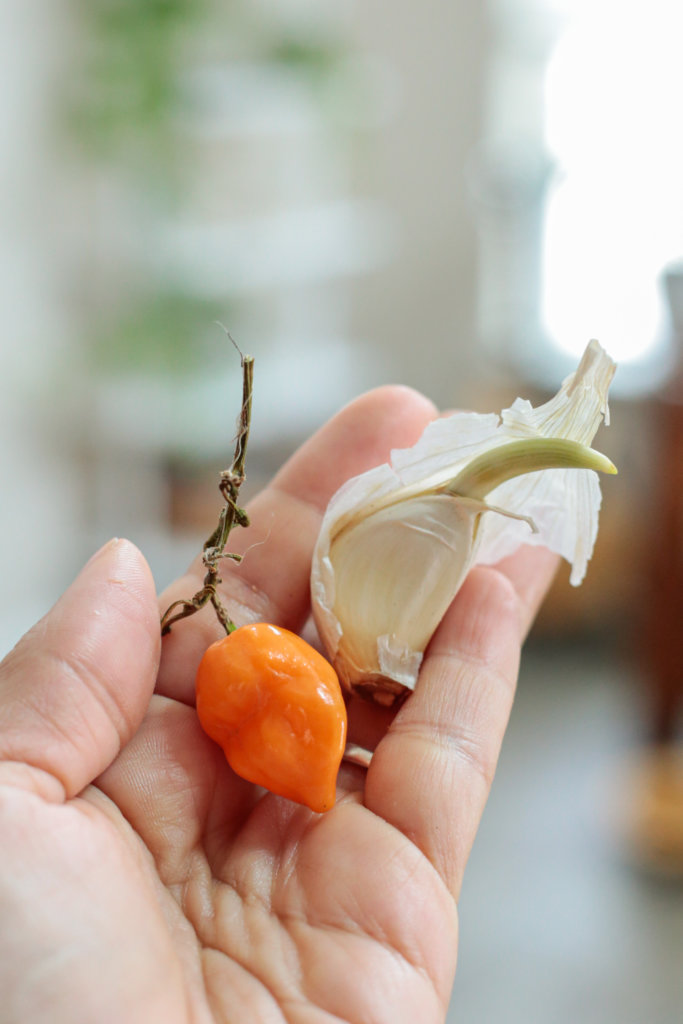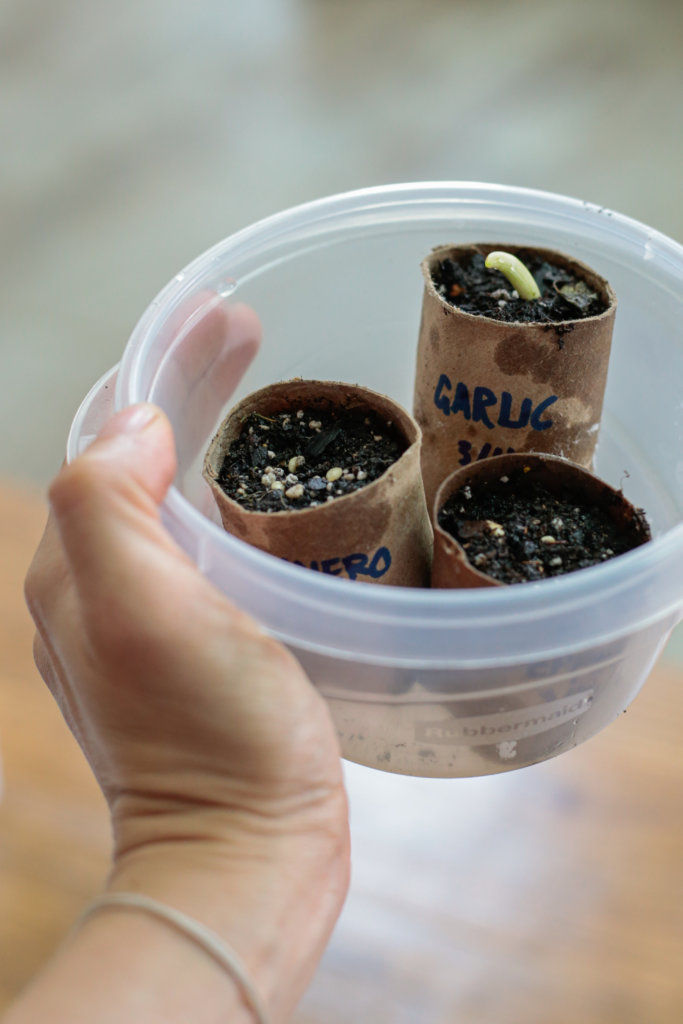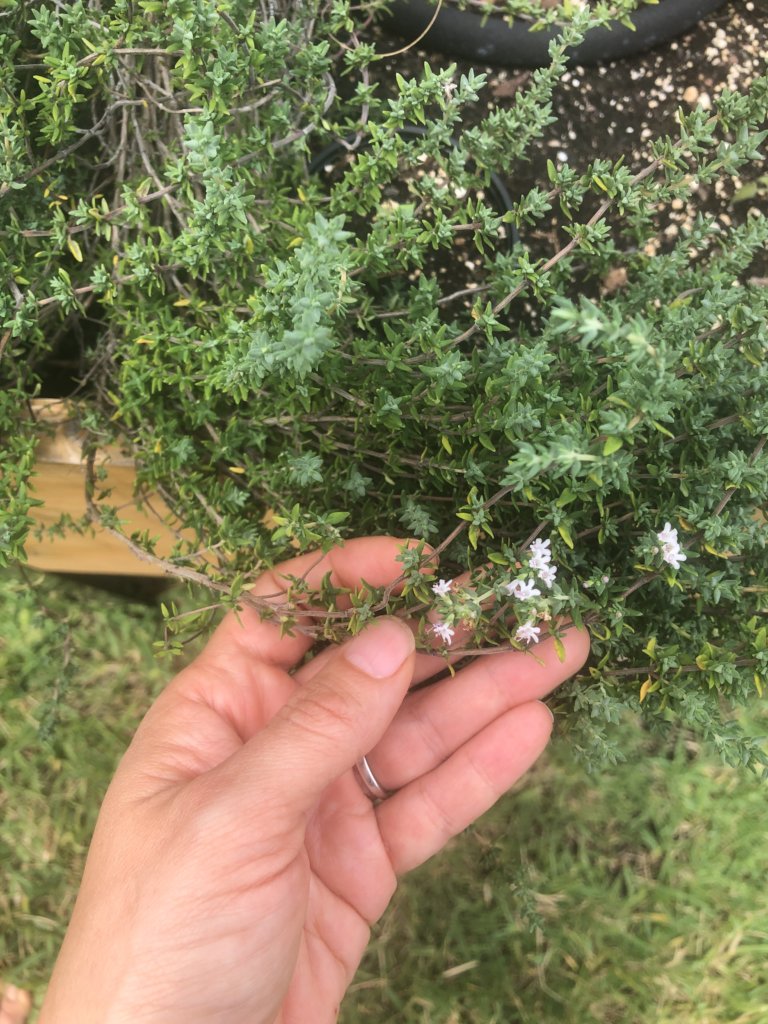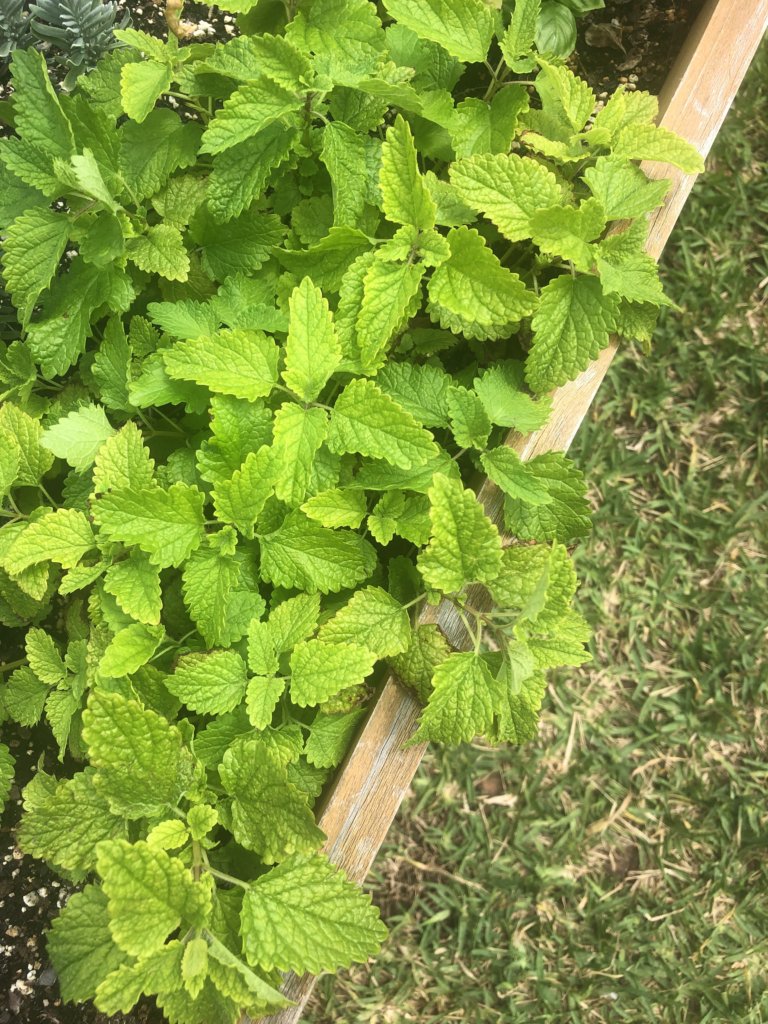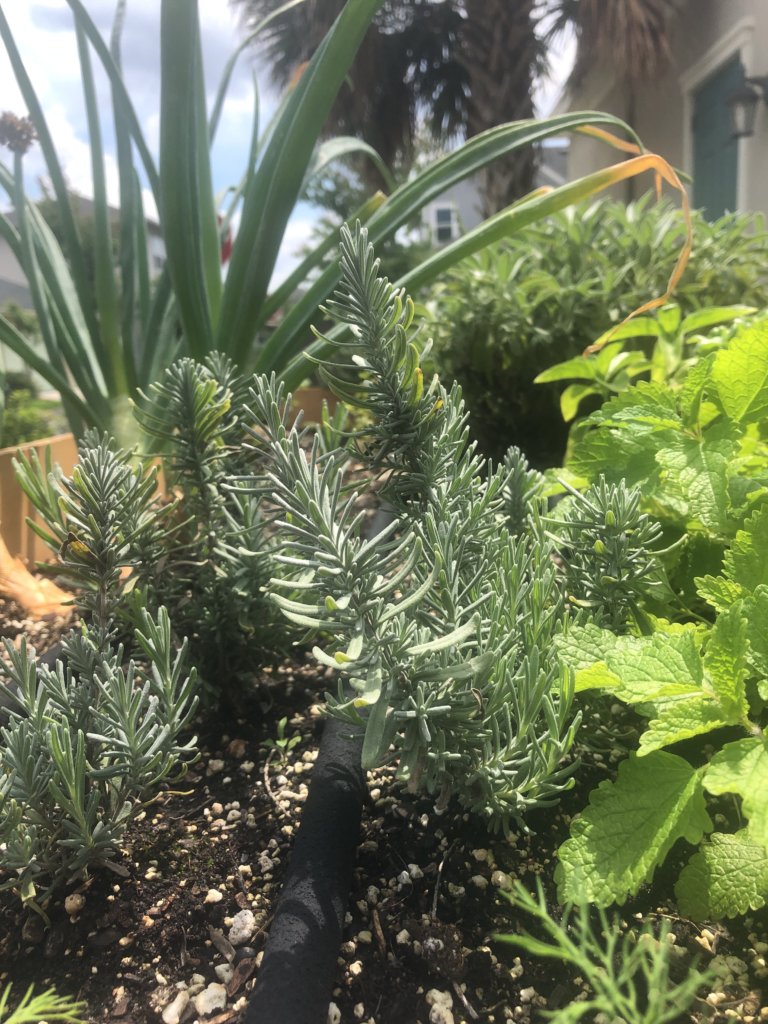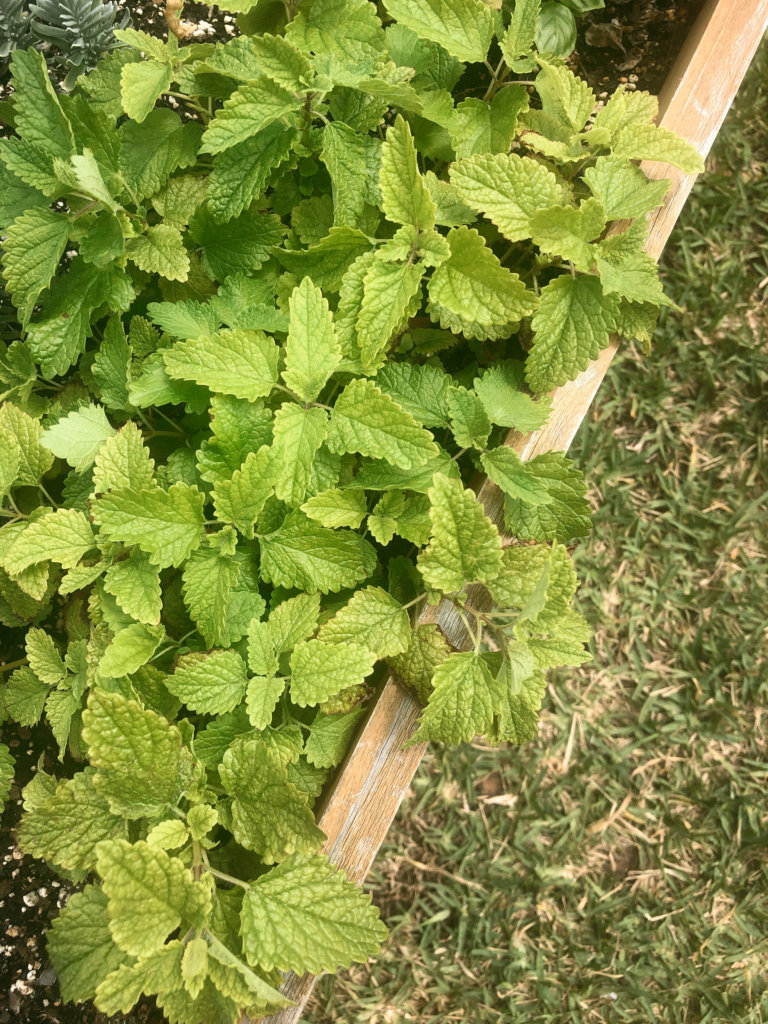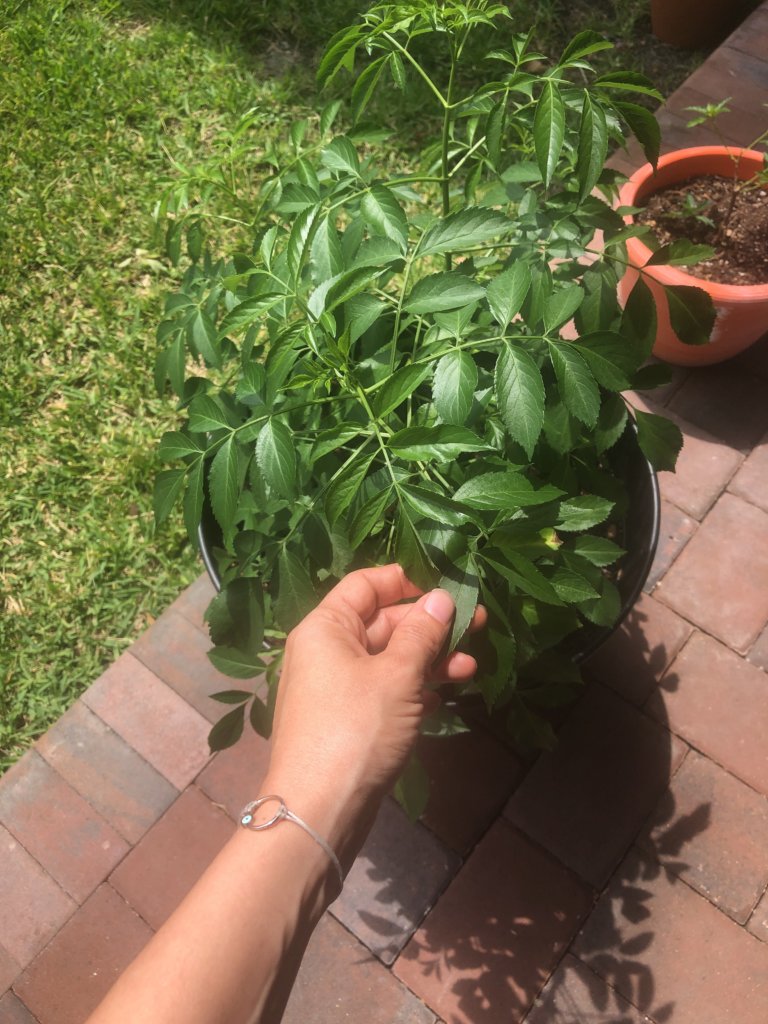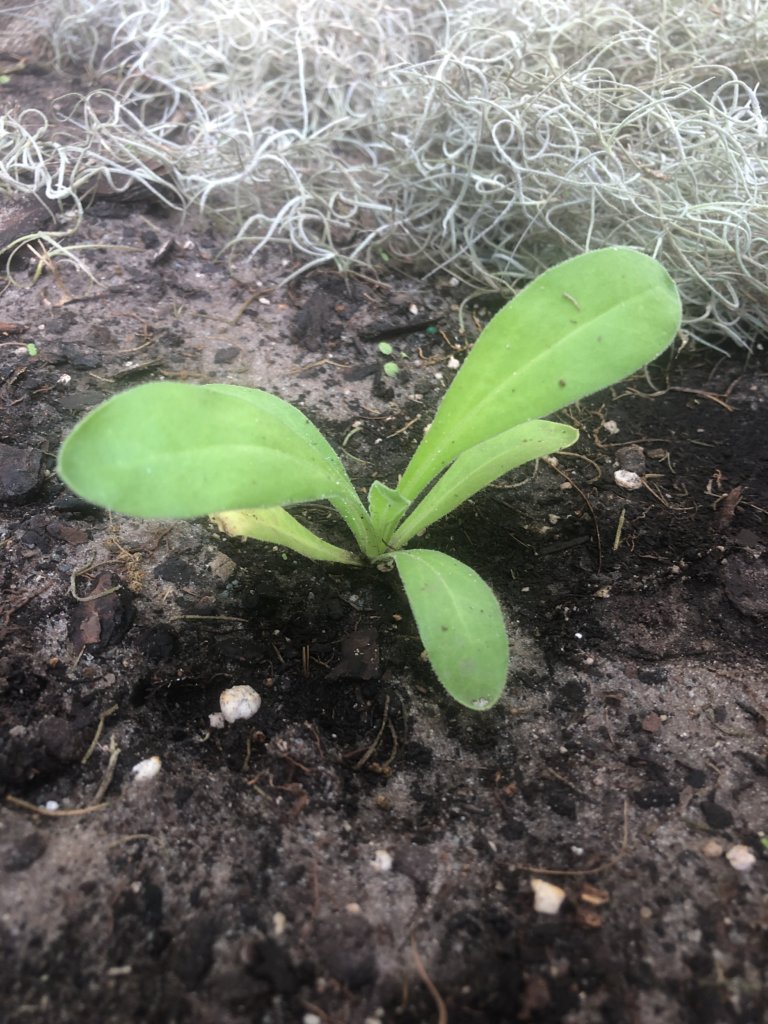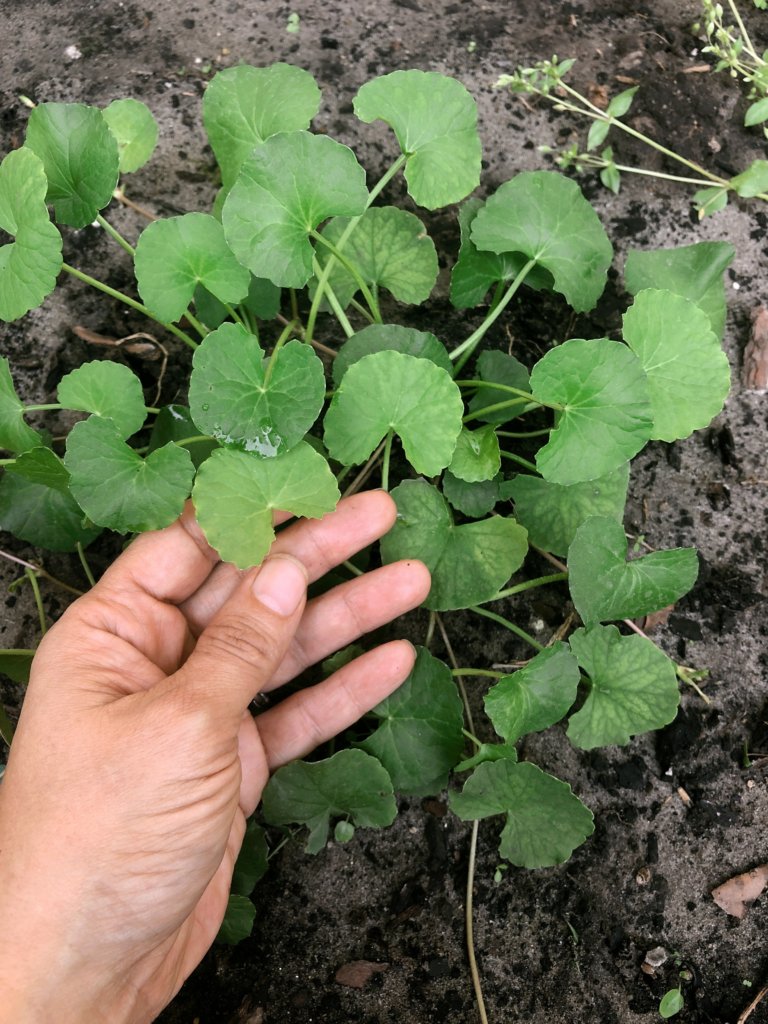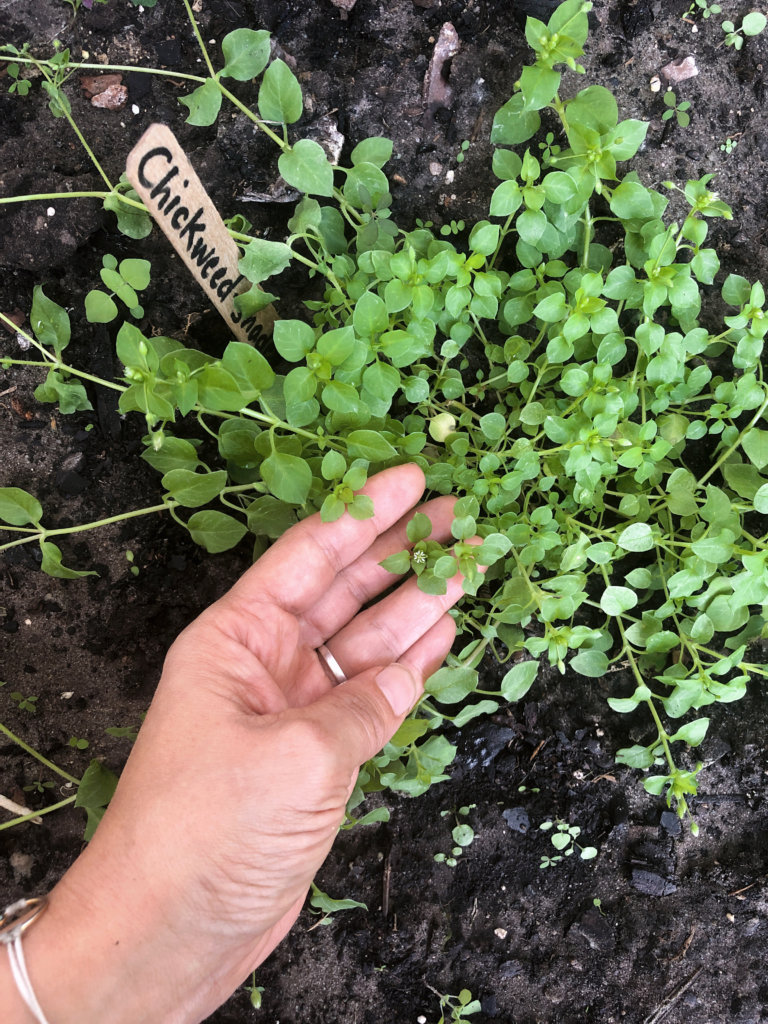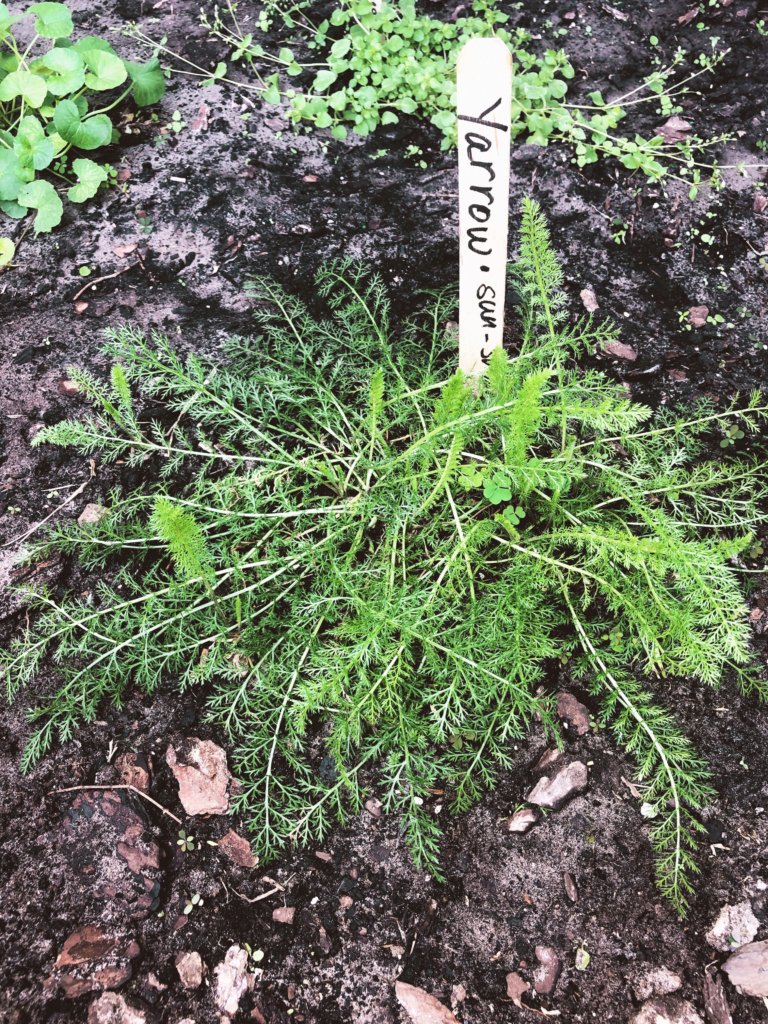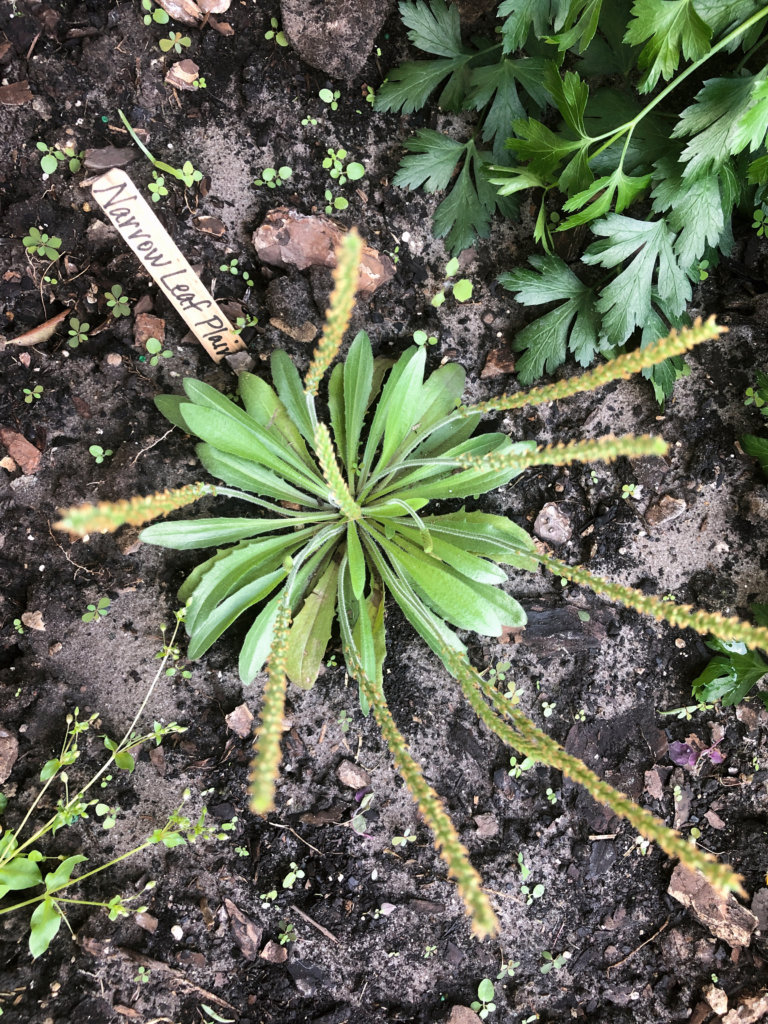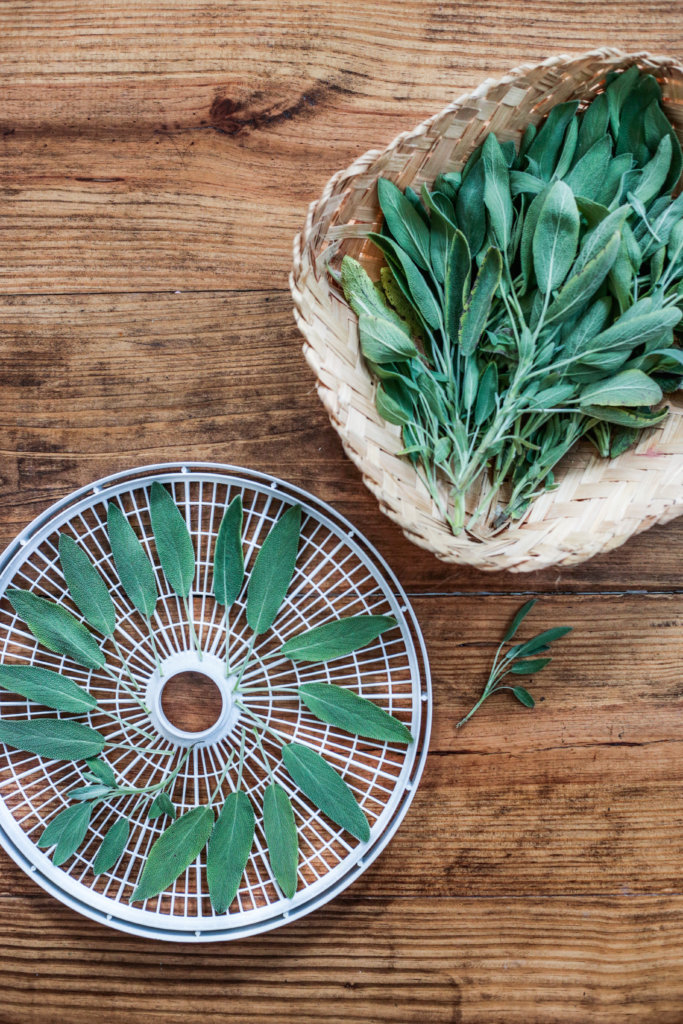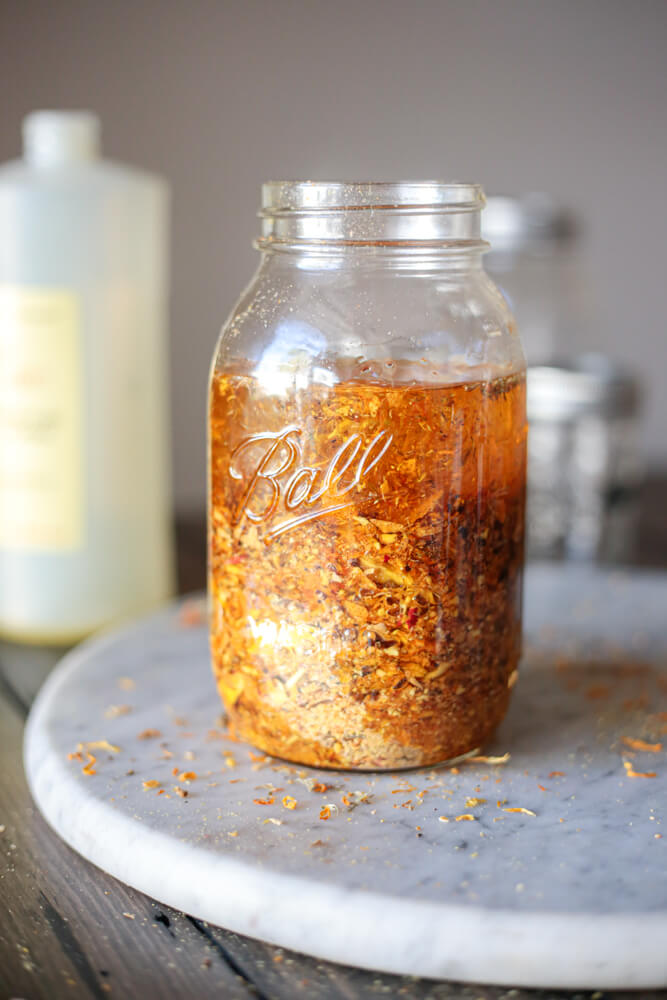This year I started growing my own skincare garden, edible herbs that have specific benefits for the skin. All of these plants can be consumed as a tea or in food, but they also can be used topically as skincare.
As I write this, it’s Spring in Florida. The plans I had to put down more plants and mulch – were quickly put on pause because of Coronovius and financial strains. So the garden remains a work in progress, and I had to get creative about how to continue “for free.”
But I decide to share where it is now – to celebrate small steps – and to give us something to look forward to in a few months to see the updates!
In this article, I’ll show you what I’m growing in my skincare garden – and some of the benefits of each plant. And I’ll provide you with resources for how to gather seeds and plants, how to dry fresh herbs and use them.
Seeds and live plants
The garden is a collection of seeds that I started a few weeks ago and live plants that I purchased from a local nursery. As well as a few free resources that I discovered:
- Floret Flowers: Although primarily focused on flowers, they do have a collection of edible plants. I’ve grown tomatoes, dill, and nasturtium. – and they’re very healthy.
- Strictly Medicinal Seeds: Founded by an herbalist, they provide a wide range of medicinal herbs, you can buy seeds and live plants. They provide a lot of information about growing zones, and seasons – which is very helpful. I’ve grown their borage and calendula.
- Free Resource: Fresh Produce. I’ve been gathering seeds from veggies that I eat. I’ve successfully grown spaghetti squash and habanero pepper. Although these are not necessarily for skincare uses, its a good way to get a garden started from scraps.
- Free Resource: Cuttings. You can take a cutting of live plants, like basil and mint and propagate it at home. Clip off the lower leaves and place the stem in a jar of water. In a few weeks, you’ll see the roots coming out. You can then transplant them into soil. If you have a neighbor who’s growing herbs, simply ask for a cutting. Or the next time you buy fresh herbs at the supermarket, save a stem for propagating.
Soil
As an herbalist, I am not an expert gardener. But the one rule I know is that the health of your plants depends on your soil. For the seedlings, I used a DIY soil blend. And for the garden and pots, I buy good quality soil. If you don’t have access to good quality soil – then build good soil by adding compost, which you can make from scraps. To learn more about soil and gardening skills – I get a lot of free information from the YouTube Channel, Growing a Greener World.
Garden Tour
Here’s what I’m growing, which again – are edible herbs, which I enjoy eating – but also I grow because of their topical applications and benefits too.
Thyme: Greatly used for its anti-infectious actions. Thyme is antibacterial, antiviral and antiseptic. It makes a great “wash” for the skin and scalp. It also helps to decongest the lungs and makes a great “Vicks” remedy. Infuse thyme into apple cider vinegar, oil, water or honey or use in the bath and in steam inhalation.
Sage: Topically speaking – Sage’s combination of astringent and antiseptic actions makes it ideal for the skin, especially moist skin conditions where you see an excess of secretions. It tightens tissue which helps to constrict excess sweat and oils. It reduces inflammation and protects against infection, which is helpful with cuts, burns, sore throats and other conditions where tissue is irritated and healing. Sage is slightly warming and has anti-spasmodic actions, which help to ease tense or aching muscles. You might add sage to a muscle recovery balm, or bathe in sage to relieve aches and pains. Read More on uses for Sage
Lavender: The “desert island herb” lavender is incredibly helpful in so many ways. It helps promote healing and protects the skin from damage, it cleanses and cools hot, irritated skin. Discover just how helpful Lavender is.
Lemon Balm: As someone who suffers with cold sores, lemon balm is so helpful. Make lemon balm honey, or chapstick to apply onto lips. And consume lemon balm tea when stress causes skin issues. Lemon balm is a nervine, it strengthens your nervous system and helps your body respond to stress with more ease. But it’s also wildly antiviral and will help to fight off a virus trying to take advantage of your lowered state.
Elderberry: The berries are most knows for their antiviral benefits – elderberry syrup has been in high demand with Coronavirus. But also the leaves and the flowers of the Elderberry can be used topically, mainly for its anti-inflammatory action.
Calendula: The ultimate “skin healer” calendula has an affinity for skin and tissue. It helps to support the process of healing, whether it’s a cut, scrape or breakout on the skin. It also stimulates the lymphatic system to eliminate fluid and waste buildup.
Gotu Kola: This is your circulatory support for varicose veins and poor circulation. Circulation is also important to help the healing process: acne and blemishes. Dry fresh Gotu Kola can be powdered and made into a healing, stimulating face mask. You can also bathe in a strong infusion of Gotu Kola for your legs.
Chickweed: Used to help relieve itch and calm inflammation, good for bug bites, eczema, and rashes. Chickweed is a demulcent, so it’s especially helpful for dry and dehydrated conditions.
Yarrow: Herbalist use yarrow as a first-aid treatment, to stop bleeding, You can actually chew on a leaf and apply it to a bleeding cut. It’s also antimicrobial and pain-relieving. It helps to restore problematic, sensitive skin.
Plantain: The herbal remedy for cuts, scrapes, bites and broken skin. It’s an antiseptic and anti-inflammatory, and also an emollient which provides a moist protective layer over the skin. You can apply plantain directly on the skin as a poultice, as a first-aid treatment. You can also infuse dried plantain leaves into oil to make a healing balm.
Preparing fresh herbs for skincare
Oil Infusion: first dry fresh herbs to remove moisture, and then infuse into oil to use directly on the skin, or to make balms and butter.
Bath, Sitz Bath or Foot Bath: Add fresh or dried herbs to hot water.
Infused Vinegar: Infuse dry or fresh herbs into apple cider vinegar
Powdered Herbs: Dry herbs and blitz them into a powder, create face masks and cleansing grains.
Herbal Scrubs: Grind fresh herbs into sugar or salt
I hope this inspires you to grow your own skincare garden. The whole process brings beauty to life: planting the seeds, watching them grow and walking out to your garden to make yourself something beautiful. I would love to know what you plant in our garden, please share on Instagram by tagging #littlegreendot

